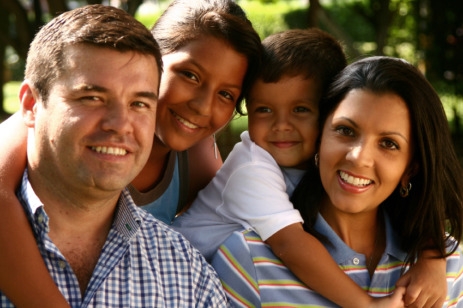
About 15 million Hispanics lived in California on July 1, 2014, compared to roughly 14.9 million non-Hispanic whites, according to U.S. Census Bureau estimates released late last week. The California Department of Finance predicted in 2013 that Hispanics would outnumber whites in 2014; the census figures confirm that prediction.
The new data represents a historic shift over a short period of time. California has six times as many Hispanics today as it did in 1970. The number of non-Hispanic whites in the state has declined since 1970.
California Hispanics today enjoy more influence than ever before. They run tens of thousands of California businesses; they support scores of Spanish-language newspapers, radio and TV stations; they make up a sizable proportion of nearly every county in the state, and they hold political positions ranging from mayor of Long Beach to president pro tem of the state Senate.
“It's a milestone for California,” said Mark Hugo Lopez, director of Hispanic research at the Pew Research Center. “In many respects, California's large population growth has been driven by Hispanic population growth.”
Two factors largely explain the growth in California's Latino population: immigration and high birth rates.
From the 1970s through the 1990s, millions of Mexicans, Guatemalans and other Latinos crossed the border into California, some legally, some not. That immigration has lately slowed, particularly during the last recession, several demographers said.
For the past decade or so, most of the population increase among California Hispanics has come from a high number of births and a low number of deaths, several experts said. Latinos tend to be significantly younger than their neighbors; they are of an age where they are likely to have children.
“What's mostly going is the difference in birth rates in Latinos and non-Hispanic whites,” said Laura Hill, a senior fellow at the Public Policy Institute of California.
Conversely, the birth rate among whites is relatively low as the population ages and young, non-Hispanic whites put off having children, Hill and others said.
“Along with this, we see people who have left,” said Robert Suro, a professor at the University of Southern California and director of the Tomás Rivera Policy Institute, a research center that studies demographic diversity. “Somebody who doesn't want to live in an intensely multicultural area has left coastal California by now. Most of them were non-Hispanic whites. Most of them were older adults.”
Latinos in California are largely concentrated in rural farming counties or urban Southern California. About 21 percent of the Sacramento region's residents identify as Latino.
The large majority of Latinos in California are here legally and are working, federal statistics show. Legal immigrants make up more than 80 percent of the state's Latino population, according to the latest figures from the U.S. Department of Homeland Security. More than 90 percent of Latinos in the California labor force hold a job, according to the state Employment Development Department.
“It's a mistake to think California Latinos are just a bunch of undocumented people,” said Jim Gonzalez, chairman of Sacramento's Cien Amigos, a civic action group dedicated to improving California-Mexico relations. “The Latino community is a young, dynamic community. They're excellent consumers, constantly providing for their families, so in pure economic terms alone, this is positive news.”
Even so, many Latinos continue to face barriers. Total Latino household income in California was roughly one-third of household income for non-Hispanic whites in 2013, census figures show. Activists continue to work at increasing voter turnout and social mobility among Hispanics.
When it comes to politics in California, “Latinos punch under their weight,” Suro said.
That could change. Due to population growth alone, California Latinos will make up an estimated 33 percent of voters in the 2040 presidential election, compared with about 24 percent in 2012, said Mindy Romero, director of the California Civic Engagement Project at the UC Davis Center for Regional Change.
“If they increase their turnout rates more, coupled with the increase in population, you are going to see even larger increases in their political influence,” Romero said.
Latinos and other ethnic groups have also made California increasingly attractive to those seeking to live in a diverse community, Suro said. Their growing presence helps the state's economy, he added.
“The population change has a magnet to a certain type of person,” he said. It attracts “people looking for a quickly changing ... new-economy ... multicultural-type place.”
Source: Originally published on the Sacramento Bee as Census: Hispanics overtake whites to become California's largest ethnic group, by Phillip Reese and Stephen Magagnini, June 30, 2015.